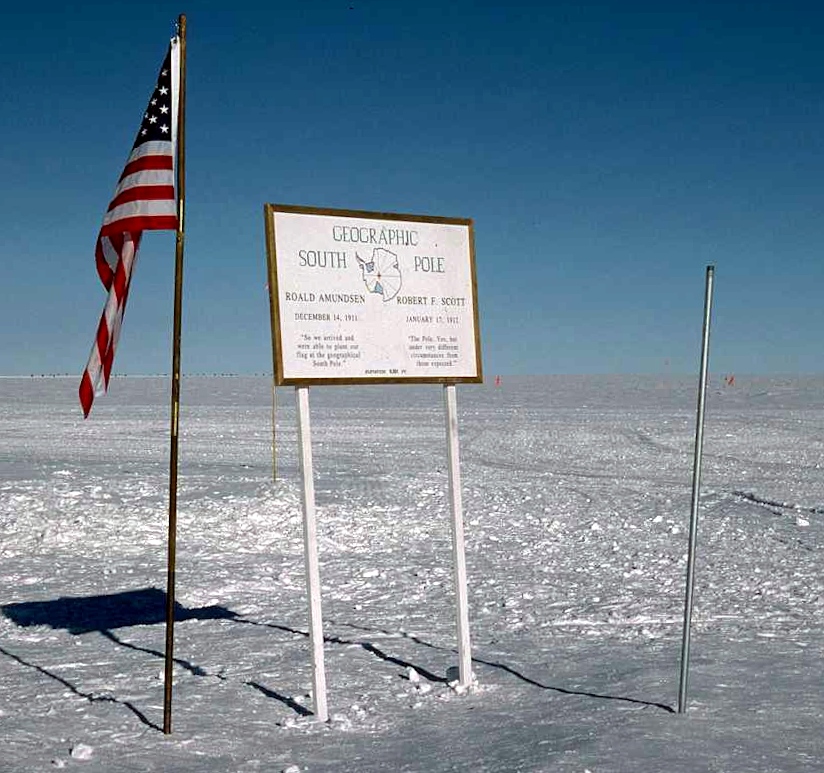South Pole
 The South Pole, also known as the Geographic South Pole or Terrestrial South Pole, is the southernmost point on Earth and lies antipodally on the opposite side of Earth from the North Pole, at a distance of 20,004 km (12,430 miles) in all directions. It is one of the two points where Earth's axis of rotation intersects its surface.
The South Pole, also known as the Geographic South Pole or Terrestrial South Pole, is the southernmost point on Earth and lies antipodally on the opposite side of Earth from the North Pole, at a distance of 20,004 km (12,430 miles) in all directions. It is one of the two points where Earth's axis of rotation intersects its surface.Situated on the continent of Antarctica, it is the site of the United States Amundsen–Scott South Pole Station, which was established in 1956 and has been permanently staffed since that year. The Geographic South Pole is distinct from the South Magnetic Pole, the position of which is defined based on Earth's magnetic field. The South Pole is the center of the Southern Hemisphere. Provided by Wikipedia
-
1
-
2
-
3
-
4
-
5
-
6
-
7
-
8
-
9
-
10
-
11
-
12
-
13Maps of the Southern Millimeter-wave Sky from Combined 2500 deg^2 SPT-SZ and Planck Temperature Databy Chown, R., Crites, A. T., South Pole Telescope CollaborationGet access
Published in The Astrophysical Journal Supplement Series (2018)
Article in Journal/Newspaper -
14
-
15
-
16
-
17
-
18
-
19
-
20